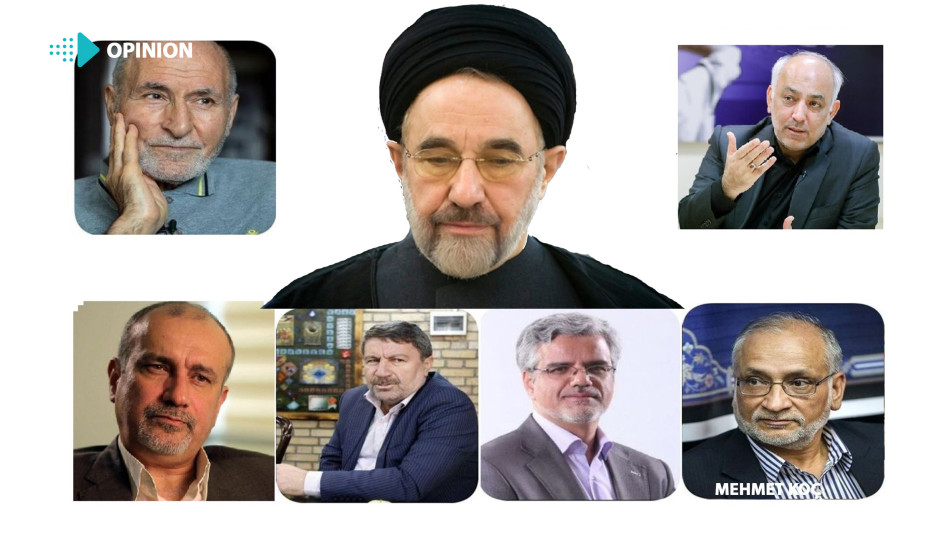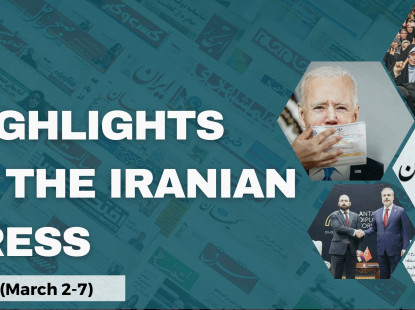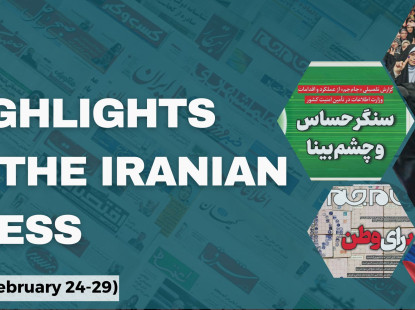The Approach of the Reformists to the Protests
The protests in Iran have now reached two and a half months. In terms of duration, they are the longest uninterrupted protests since the Revolution. The protests, which started in the sociocultural sphere of women and hijab, have targeted the system, and the Iranian diaspora abroad continues its efforts to convince the international community to overthrow the system by supporting the protests. The regime, on the other hand, has aimed to end the protests by spreading them out over time instead of suppressing them with a harsh intervention as it did on January 2018 and November 2019. In this way, the regime has tried to minimize human casualties. Reformists, on the other hand, have previously stated that they act as a buffer zone between the state and the nation, and have drawn attention to such risks if they are politically excluded. The engineering process (systematic intervention) in the February 2020 general elections and the June 2021 presidential elections excluded reformists from the country's politics.
The reformists were not only limited by the establishment; they also lost a significant amount of their social capital during their period in power due to their inability to meet social demands and solve economic problems as well as frequent corruption cases. During the one-year rule of the Raisi government, they failed to put forward an effective opposition. The protests that started in such an atmosphere, created some partial opportunities for the reformers. It is possible for the reformists to take advantage of these opportunities and regain their place in the country's politics if they convince Supreme Leader Khamenei and the establishment.
The elite of the establishment, especially Khamenei, characterized the protests as a plot by foreign powers. Following this approach, the establishment defined the protests not as a social movement with legitimate demands but as an "uprising" to create chaos and disorder targeting the system. Khamenei and the military-security elite saw the uprising as part of a hybrid war targeting Iran. After this characterization, Khamenei expected the reformist elites to follow suit. However, reformists have tried to chart a different course.
Reformists' Instrumental Approach to the Protests
Despite Khamenei's aforementioned approach, reformists viewed the protests from the opposite perspective and tried to use them as a means of pressure and bargaining to regain their role in the country's politics. However, the reformists did not encourage large sections of passive dissatisfied people to participate in the protests, as protests were involved in violence and aimed at system change. The drive of the reformers was not to change the system, but to revise it and to play a leading role in this revision in order to manage and direct the country's politics. If they openly supported protests that targeted the system and were involved in acts of violence, they would have risked losing their entire political position. Reformist political actors and thinkers, after evaluating the protests from various perspectives, shared their assessments and solutions with the public in a comprehensive declaration.
The declaration issued on November 9, 50 days after the protests began, emphasized the political, economic, social, and cultural causes of the protests, the profile of the participants, and the inaccuracy of the establishment's evaluation of the events. The declaration indicates a summary of the overlapping crises stemming from the lack of democratization. The highlights of the declaration are as follows:
- Although the protests have been led by women and youth, they have been supported by universities, sports and arts communities, pressure groups, social media, and civil society. This support shows that the protests are not specific to a region, ethnicity, gender, or generation. It manifests that the protests aim at reclaiming "life".
- The authoritarian approach to governance does not recognize different cultures and interferes with lifestyles. There is a lack of political parties on the political scene to represent different sociopolitical segments.
- There are many issues that cannot be ignored such as discriminatory/oppressive policies against women, a "0" growth rate for ten years, doubling of the poverty in the last five years, brutal sanctions, and high inflation that has been going on for years, irrepressible corruption, environmental crises due to irresponsible destruction of the environment, significant loss of the political system's ability to govern, violation of citizenship rights, and marginalization of large segments of society through illegal but so-called legal methods.
- The prevailing understanding of the report shared by the establishment to indicate the causes and actors of the crisis is itself one of the sources of the crisis. Because it is far from analyzing the current situation realistically, and the solutions it offers do not solve the crisis whereas deepening it.
- Those who demand justice, freedom, democracy, development, and life must avoid violence since violence creates legitimate grounds for the suppression of protests.
- Demanding and assisting foreign powers to impose sanctions on the country is against the national stance. Sanctions would impoverish the Iranian people and make the establishment more authoritarian.
The content of the declaration makes it clear that the political system itself is the main source of the country's political, social, economic, cultural, and environmental problems. Therefore, the political system itself must be reformed first and foremost. It was underlined that Article 59 of the Constitution, which envisages a referendum, could be invoked to resolve the deadlock. It would open up new horizons for the masses who are angry and dissatisfied with the current situation and have lost hope.
In his latest statement, Mohammad Khatami, former Iranian President and spiritual leader of the reform movement, emphasized that "regime change is neither possible nor desirable" and stated that the regime should reform itself. Khatami pointed out that if the current situation continues, the collapse of the social system will accelerate. He also called for the voices of the protestors to be heard and taken into consideration. Khatami's statement that regime change is not possible and not desirable was interpreted by the IRGC as a positive but insufficient step reminiscent of the "yes but not enough" approach. Despite the censorship implemented on him and even his photographs in the press by the regime, Khatami's stance has found a partial response on the other side. His statement and the subsequent partially positive approach of the IRGC towards him intensified the traffic between the parties.
The leadership delegation of the Reformist Front, including Reformist Front Spokesperson Ali Shekouri-Rad, Reformist Front Secretary Ali Bakiri, Reformist Front First Deputy Chairman Hossein Marashi, and Behzad Nabawi, Elias Hazrati met with Chief Justice Hossein Mohseni-Ejei and Secretary General of the Supreme National Security Council Ali Shamkhani to discuss the current situation of the protests and convey their demands. However, these efforts by the Reformist Front and Khatami were not enough to achieve what they wanted. In his speech on November 26 on the occasion of Basij Week, Supreme Leader Khamenei stated that those who voiced demands such as "normalize relations with the USA to end the crises in the country" and "listen to the voice of the nation" were consciously or unconsciously acting like spokespersons for the demands of the enemy. Khamenei's approach was significant in terms of showing where he positioned the reformist circles.
In conclusion, although the reformists tried to use the protests as a means of pressure and bargaining against the establishment in order to regain their former role in the country's politics, they failed to achieve their goals. It is highly unlikely that the establishment will provide the reformists with that opportunity again after carefully discrediting them in the eyes of their social base and limiting their role in the political system as much as possible. Far from creating that opportunity, Khamenei has characterized them as the spokespersons of the enemy and presented two options to the reformists: complete submission to the system or elimination. The reformists, on the other hand, believe that they are the most rooted movement in Iran and that this situation is temporary. Therefore, they reject the impositions of Khamenei and the establishment and seek to develop an alternative path.











